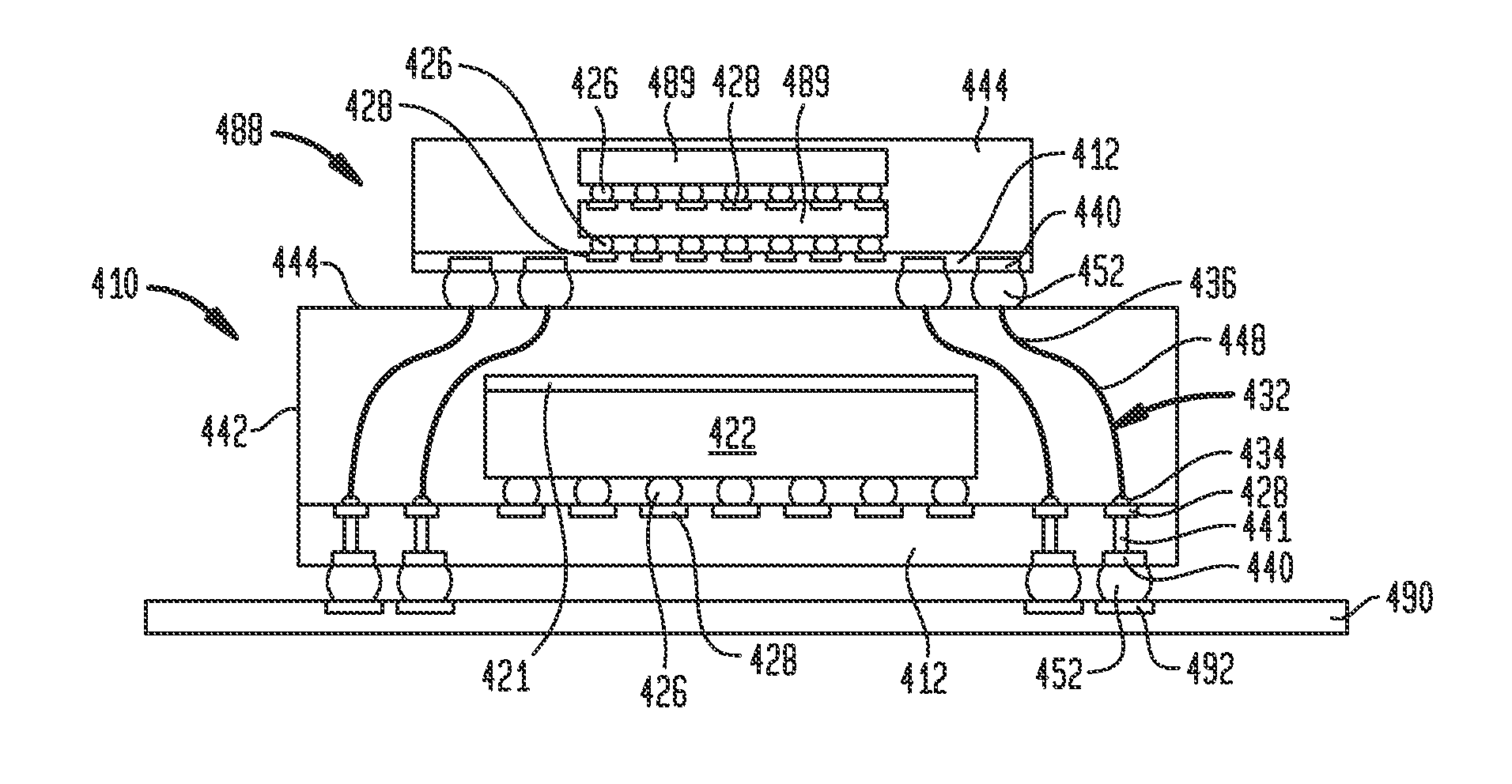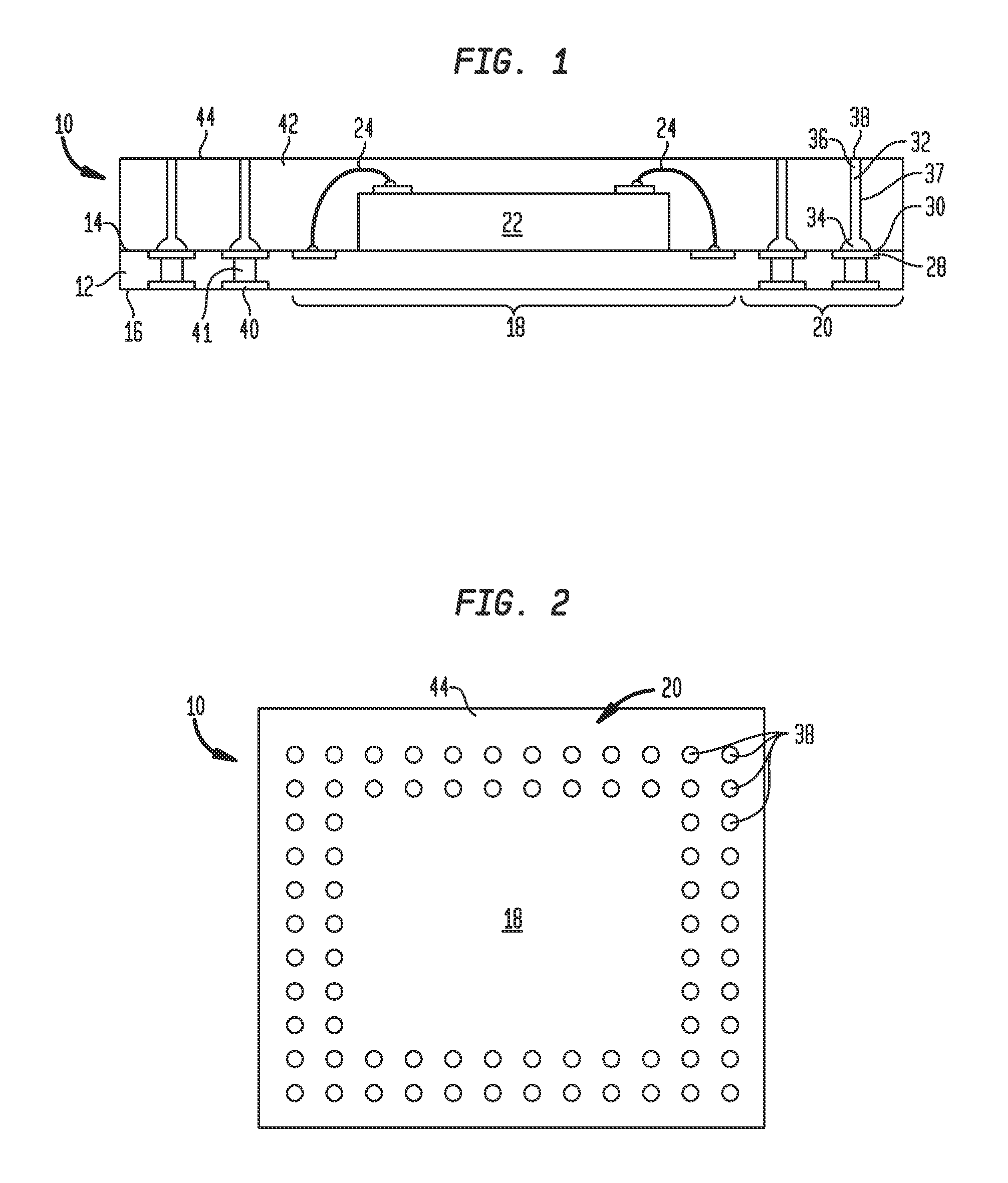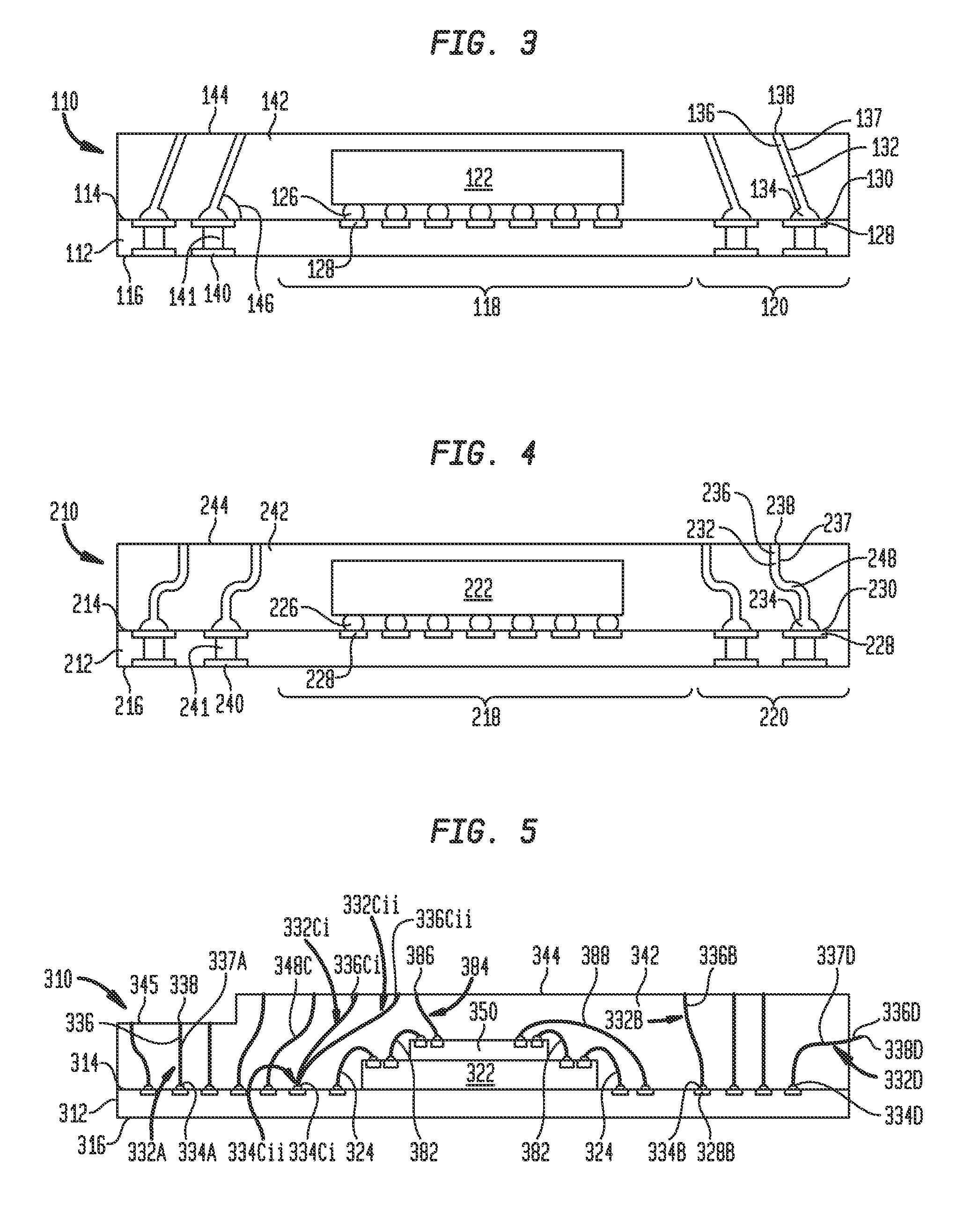Method for package-on-package assembly with wire bonds to encapsulation surface
a technology of encapsulation surface and wire bonding, which is applied in the direction of basic electric elements, solid-state devices, manufacturing tools, etc., can solve the problems of difficult or impossible to form arrays of microcontacts with appreciable height and very small pitch or spacing, and the configuration of microcontacts formed by conventional etching processes is limited
- Summary
- Abstract
- Description
- Claims
- Application Information
AI Technical Summary
Benefits of technology
Problems solved by technology
Method used
Image
Examples
Embodiment Construction
[0060]Turning now to the figures, where similar numeric references are used to indicate similar features, there is shown in FIG. 1 a microelectronic assembly 10 according to an embodiment of the present invention. The embodiment of FIG. 1 is a microelectronic assembly in the form of a packaged microelectronic element such as a semiconductor chip assembly that is used in computer or other electronic applications.
[0061]The microelectronic assembly 10 of FIG. 1 includes a substrate 12 having a first surface 14 and a second surface 16. The substrate 12 typically is in the form of a dielectric element, which is substantially flat. The dielectric element may be sheet-like and may be thin. In particular embodiments, the dielectric element can include one or more layers of organic dielectric material or composite dielectric materials, such as, without limitation: polyimide, polytetrafluoroethylene (“PTFE”), epoxy, epoxy-glass, FR-4, BT resin, thermoplastic, or thermoset plastic materials. T...
PUM
| Property | Measurement | Unit |
|---|---|---|
| diameter | aaaaa | aaaaa |
| diameter | aaaaa | aaaaa |
| diameter | aaaaa | aaaaa |
Abstract
Description
Claims
Application Information
 Login to View More
Login to View More - R&D
- Intellectual Property
- Life Sciences
- Materials
- Tech Scout
- Unparalleled Data Quality
- Higher Quality Content
- 60% Fewer Hallucinations
Browse by: Latest US Patents, China's latest patents, Technical Efficacy Thesaurus, Application Domain, Technology Topic, Popular Technical Reports.
© 2025 PatSnap. All rights reserved.Legal|Privacy policy|Modern Slavery Act Transparency Statement|Sitemap|About US| Contact US: help@patsnap.com



